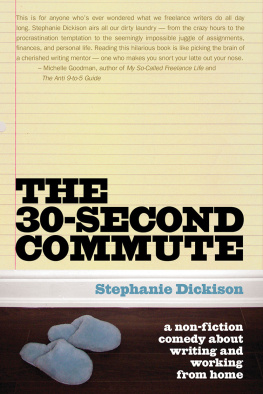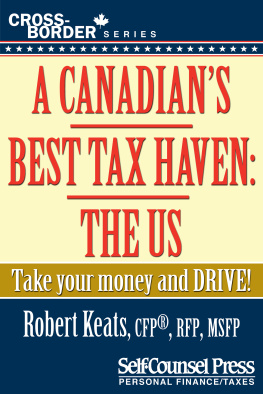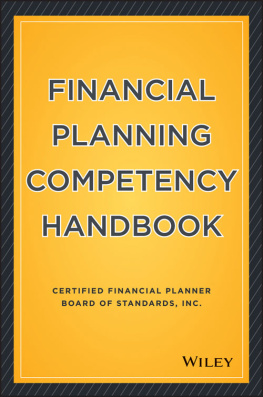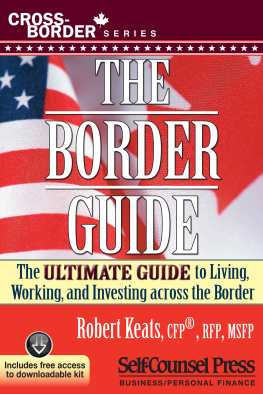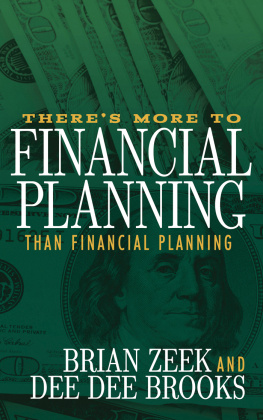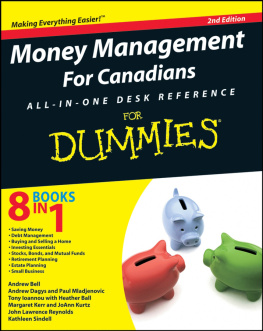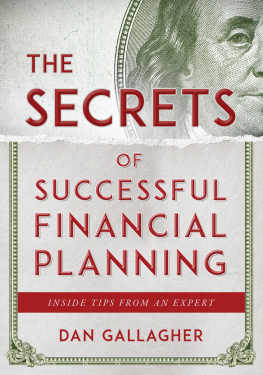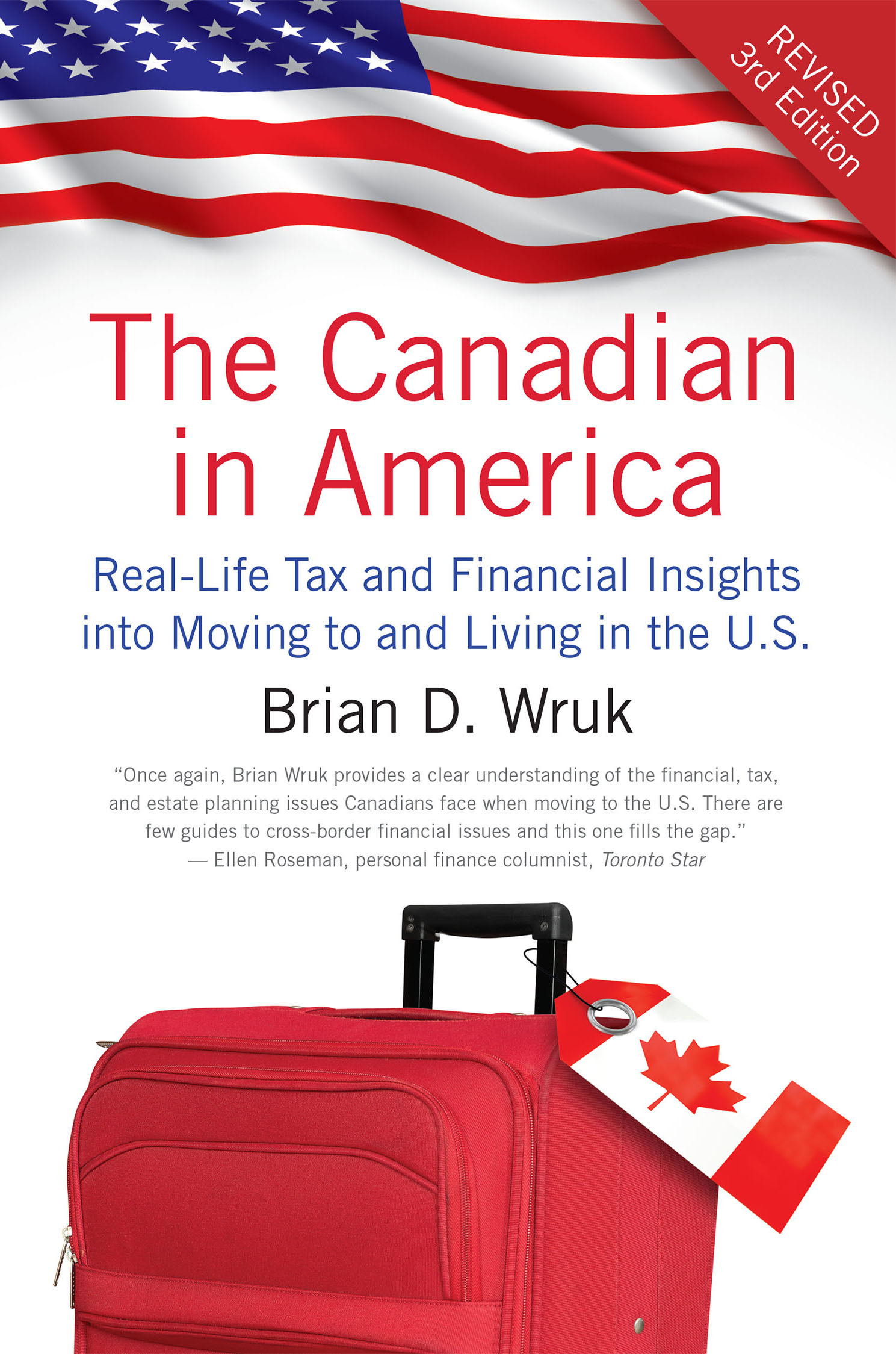Moving from Canada to the United States is a daunting task when you consider the reams of required paperwork and tax hurdles. Despite this, more than 20,000 made this move in 2012, often with little or no appreciation of the complexities involved. All of which makes the long-awaited third edition of Brian Wruks The Canadian in America most welcome indeed.
Jonathan Chevreau, Founder of FinancialIndependenceHub.com
There are very few people who understand the world of cross-border financial planning like Brian Wruk. This book is a wonderful testament to that. Anyone considering a move across the CanadaU.S. border should have a copy of this book!
Tim Cestnick, Managing Director, Advanced Wealth Planning, Scotiabank
Every Canadian estate planner, lawyer, attorney, and advisor needs to be familiar with U.S. tax and investment matters and Brians book is a necessary and welcome addition to the library of knowledge in this area.
Roy Klassen, Estate Planning Attorney
Dealing with U.S. immigration and tax rules can quickly create a gigantic headache. This easy to understand book offers a gigantic dose of aspirin.
Bruce Cohen, Author of The Pension Puzzle and The Money Advisor
Brian Wruk has put together the most complete resource book covering all areas of relevance for both Canadians and Americans heading south over the 49th parallel. A must-read and resource document for any practitioner serious about dealing with clients relocating south.
Doug Macdonald, MBA, RFP, Macdonald, Shymko & Company, Fee Only Financial Advisors
This is the best book Ive seen on the myriad of financial and legal issues involved in moving to the U.S.
Ian McGugan, Editor, MoneySense magazine
The Canadian in America is an excellent one-stop resource for Canadians living in the U.S. I will certainly recommend it to our clients.
Geoffrey D. Leibl, Immigration Attorney, Leibl & Kirkwood
ACKNOWLEDGMENTS
Given the vast complexities and issues surrounding any move to the U.S., we are unashamed to say that we dont know everything! However, we view ourselves as the quarterback of a team of people to effectively coordinate your move. To that end, our firm relies on a large network of trusted, competent professionals to assist with the variety of issues our clients have. We view our knowledge as being a mile wide and a foot deep, but we have experts in all areas whose knowledge is a foot wide but a mile deep. We have drawn upon these experts to review various parts of this book, and want to thank them individually for their assistance in making this large undertaking possible.
Richard Brunton, a fabulous Canada-U.S. tax accountant in Boca Raton, Florida. Thank you for your encouragement of this project and for imparting your wisdom and knowledge whenever needed.
Brent Gunderson, an excellent attorney in Mesa, Arizona, offering the unique combination of estate planning and immigration to our Canadian-American clients. Thanks for your counsel in these highly technical areas.
Mitch Marenus, our chief investment officer, my partner, my friend. Thank you for helping me through the difficult times and keeping our clients and my investment strategies focused on the long term.
Eva Sunderlin, our Canada-U.S. paraplanner and a cherished associate. Thank you for all the work you did to make this book possible. Thanks for all you do for our clients (and us!).
Jorge Alonso, our Canada-U.S. investment associate and a cherished associate. Thank you for all you do to implement our unique investment approach.
Our clients in Canada and the United States, without whom our firm would not exist. We enjoy the relationships we have with you and appreciate your excitement about this project.
Our friends, in Canada and the U.S., who have pushed us over the years and helped us overcome many obstacles. Thanks also to Isaacs for your edits and Canadian perspective.
My family, especially Dad and Mom. Thanks for all you have done for me over the years and your support of whatever I did (including moving to the U.S., which I know caused you worry). I appreciate the home cooking, your prayers, and the wisdom you imparted. And finally, to my wife, Kathy, and our daughters, Corrine and Emily (my little Canadians) I love you and thank you for your support in this endeavor. Again, I apologize for underestimating the time I would be away from you during the revision of this book.
And to our readers, thank you for buying the second edition of this book and our other book The American in Canada (2nd edition) as well. We trust that those of you who are already Canadians in America will find it a useful reference, as will those beginning, undertaking, and completing a move to the U.S. Our hope is this book will save you more time, money, and frustration than we experienced in our Canada-U.S. moves. If you have any questions, comments, edits, or things youd like to see in later editions, please email us at book@transitionfinancial.com and tell us what is on your mind. For more information or to chat with us live, please visit our website at transitionfinancial.com.
INTRODUCTION
I want to start by thanking all of you who made the first and second editions of this book such a success. I knew there was a need for this information, but I am truly overwhelmed by your kind comments and great suggestions. I have incorporated many of them, along with all the law changes that have occurred (including the host of new disclosure and tax regulations as a result of FATCA and the new IRS PFIC rules on most Canadian investments including all mutual funds and ETFs), to continue making this book the definitive resource available for those in Canada considering, moving, or already located in the U.S. The complexities associated with moving to the U.S. are astounding, yet according to the Association for Canadian Studies, over 20,000 people moved from Canada to the U.S. in 2012. The question is: how many moved with little or no idea of these complexities? Interestingly enough, Citizenship and Immigration Canada approved 34,185 visas for U.S. residents in 2011, just short of the record in 2010 of 35,060. What causes people to move to another country without understanding the financial impact or opportunity a move presents? We believe it is the similarities in culture, currency, language, and goods consumed between Canada and the U.S. that lead people to think their situation is simple. In fact, the differences in taxation, investing, health care, wills, and estates are profound. The complexities I encountered when I moved down to the U.S. in 1990 as a single man (poor student), and moved back up to Canada in 1992 with my American-born wife, before moving back to the U.S. permanently in 1996 were mind-boggling, as the following story illustrates.
MY STORY
My fascination with the U.S. started in high school when I took a bus trip to Portland to participate in a school band competition. I became interested in U.S. culture, geography, and so on. Then I took another bus trip with Campus Life that went through Montana, Idaho, Utah, and Las Vegas to Los Angeles. There I experienced Disneyland, Knotts Berry Farm, Magic Mountain, and Universal Studios. These experiences, combined with the oceans, beaches, and warm weather, had me hooked. From that point on, I decided I would eventually live in the U.S. My goal was to get a green card and have the ability to move, live, and work anywhere in Canada and the U.S.
In 1990, I decided a master of business administration degree would help my telephone career, so with the support of my employer I began applying to business schools across the U.S. and Canada. I maintained that, if I was accepted at any of the U.S. schools I applied to, I was going to the U.S. Fortunately, I was accepted by two programs and responded to the invitation from the MBA program at the University of Arizona. As I neared graduation, I began the application process and was getting interest from prospective employers when I gained the affection of a young lady while in Tucson. After graduating, Kathy and I got married, and we decided to move to Calgary to resume my telephone career while she began training as a nurse. To this day, I am not sure why we did that other than to recommence my career. It wasnt until four years later that I realized I was waking up next to a green card every morning and that escape from the cold winters and punishing taxes was just an application form away. I applied and obtained a green card through the sponsorship of Kathy, and in April of 1996 I was finally able to realize my lifelong dream of residing in the U.S. I became a naturalized U.S. citizen three years later, as soon as I was eligible in May of 1999.

